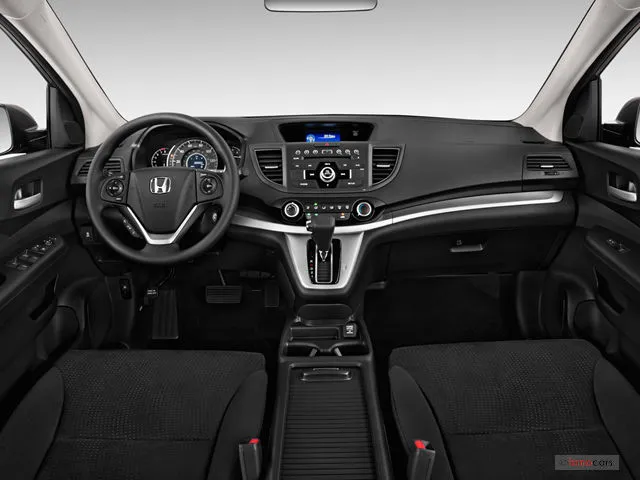
2014 Honda CR-V Common Problems & Recommended Maintenance
🚗💨 Quick Overview:
1. Common Issue: Frequent brake pad wear and fluid replacement needed.
2. Maintenance Tips: Regular brake system checks every 12,000 miles.
3. Fluid Checks: Replace brake fluid every 2 years to avoid system failure.
4. Other Recommendations: Tire rotation and oil changes every 5,000 miles for optimal performance.
5. Proactive care helps prevent costly repairs and ensures safety on the road!
If you drive a 2014 Honda CR-V, understanding your vehicle's maintenance schedule and the 2014 Honda CR-V common problems and recommended maintenance can help you avoid costly repairs, reduce unexpected breakdowns, and give you peace of mind. This quick guide is designed for CR-V owners who want reliable, easy-to-follow information—empowering you to keep your SUV running its best while saving time and money in the long run. Staying proactive with routine care and being aware of known issues not only safeguards your investment but also ensures safe, stress-free driving for years to come.
What are the most common problems with the 2014 Honda CR-V?
Battery & Charging
Owners of the 2014 Honda CR-V have commonly reported battery drain problems, particularly when the vehicle is not driven for several days. This issue is often linked to the vehicle's electronic systems combined with the use of smaller batteries, which can lead to excessive power loss over time. Regular battery health checks and avoiding long periods of inactivity can help mitigate this problem. More details can be found at Engine Patrol.
Air Conditioning System
The air conditioning compressor failure is a notable concern, with symptoms including the A/C blowing warm air. This occurs due to internal component breakdown within the compressor, which causes metal particles to circulate inside the system, potentially damaging other parts. This problem is moderately common among owners and usually requires replacing the compressor for restoration. For an in-depth look, visit 1A Auto Blog.
Transmission & Drivetrain
Transmission shuddering during acceleration, especially between 20-30 mph, has been reported. This issue is often caused by torque converter problems and can sometimes be addressed through software updates and transmission fluid changes. While not extremely prevalent, it is significant because it affects drivability. Additionally, some drivers experience vibrations at idle related to the combination of the Earth Dreams engine and the CVT transmission, which operate at lower RPMs for fuel efficiency but can cause noticeable vibrations.
Information supported by Consumer Reports and Life on Four.
Brakes & Suspension
- Brake Rotor Warping: Warped front brake rotors cause vibrations when braking. This is typically due to overheating or excessive brake system stress and is a moderately common maintenance concern.
- Suspension Noises: Groaning noises during turns have been reported, often linked to differential fluid breakdown. Regular fluid replacement and maintenance are recommended to prevent this noise and preserve suspension performance.
More on these can be reviewed at Honda The Other Side.
Water & Leak Issues
Water leaks have been reported at the base of the windshield, leading to water entering the front passenger area. This issue may result from improper sealing or drainage problems. Prompt inspection and repair are essential to prevent interior damage or mold growth.
Engine & Oil Concerns
Engine oil leaks, particularly from the oil pressure switch, are documented. While not always severe if caught early, these leaks require prompt attention to avoid potential engine damage and maintain vehicle reliability.
Heating System
Clogged heater cores have caused insufficient heating, sometimes only affecting one side of the vehicle. Honda has released technical service bulletins recommending flushing or replacing the heater core to resolve this issue. It is particularly important for owners to be aware during colder seasons.
Electrical Systems
Electrical issues such as faulty Tire Pressure Monitoring Systems (TPMS) are frequently reported. These can lead to inaccurate tire pressure readings, posing a safety risk if unaddressed. Ensuring regular diagnostic checks can help identify and fix these problems early. More details about electrical problems are available at Honda Problems.

What maintenance tasks are essential for the 2014 Honda CR-V?
| Recommended Frequency | Service Items | Notes |
|---|---|---|
| Every 5,000–7,500 miles (8,000–12,000 km) or as indicated by Maintenance Minder |
Replace engine oil (Code A) Replace engine oil and oil filter; brake system inspection; steering and suspension inspection; fluid check (Code B) |
Regular oil and brake inspections help maintain engine and safety system longevity. Cost range: Oil change $40-$70, brake inspection varies. |
| Every 7,500–15,000 miles (12,000–24,000 km) depending on sub-code triggers |
Tire rotation (Code 1) Replace air cleaner element and dust/pollen filter; inspect drive belt (Code 2) |
Tire rotation promotes even tire wear and prolongs tire life. Air filter replacement improves engine efficiency and cabin air quality. |
| Every 30,000 miles (48,000 km) or as triggered (Code 3) | Replace transmission fluid |
Ensures smooth shifting and transmission longevity. Cost range: $150-$250. |
| Every 60,000 miles (96,000 km) or as needed (Code 4) | Replace spark plugs; inspect valve clearance |
Proper ignition system performance is critical for fuel efficiency. Valve adjustment if noisy. |
| Every 60,000 miles (96,000 km) (Code 5) | Replace engine coolant |
Prevents overheating and protects engine components. Cost range: $100-$150. |
| Every 30,000 miles (48,000 km) (AWD models) (Code 6) | Replace rear differential fluid |
Essential for AWD drivetrain health. Cost varies by shop. |
| Every 3 years regardless of mileage | Replace brake fluid (Code 7) |
Maintains braking efficiency and prevents moisture-related issues. Cost range: $80-$120. |
| At 160,000 miles (256,000 km) | Inspect idle speed | Ensures smooth engine operation and optimal fuel consumption. |
For exact instructions and more detail please consult 2014 Honda CR-V Owner's manual. You can find it on Car AI App.

Smart ownership tips for the 2014 Honda CR-V
Maximize your 2014 Honda CR-V's health and value with a few smart ownership habits. Follow the recommended maintenance schedule by setting calendar reminders so you never miss vital services like oil changes, fluid checks, and brake inspections. Keep a digital log of all your service visits and repairs—this helps track warranty coverage and resale value. Get familiar with your CR-V's basics, like checking tire pressure and monitoring warning lights, using resources such as the digital owner's manual or automotive sites (Consumer Reports, forums, etc.).
To make car care even easier, check out intuitive tools and apps designed for vehicle owners. Car AI is a powerful mobile app that uses AI to act as a personal mechanic assistant, providing tailored car advice, alerts, and maintenance tips customized for your exact vehicle. It consolidates all your car's records—fuel expenses, services, receipts, even income—for stress-free management in one app. Enjoy an intuitive onboarding, customizable features, and easy access to your car's manual anytime you need it. Leveraging the right technology helps you stay ahead of problems and simplifies owning your 2014 Honda CR-V.
Frequently Asked Questions about the 2014 Honda CR-V
Q: What is the recommended maintenance schedule for my 2014 Honda CR-V?
A: Follow the manufacturer's recommended maintenance schedule which includes regular oil changes every 7,500 miles, brake inspections, fluid level checks, tire rotations, and timing belt inspections. Setting calendar reminders ensures you never miss these vital services to prevent costly repairs.
Q: How can I keep track of all maintenance and repairs for my CR-V efficiently?
A: Maintaining a digital log of service visits, repairs, and receipts is highly effective. This helps monitor warranty coverage, improves resale value, and provides an organized history of your vehicle's upkeep.
Q: What are some common issues with the 2014 Honda CR-V I should be aware of?
A: Common problems reported by owners include occasional transmission hesitation, engine noise, and air conditioning issues. Regular inspections and timely repairs based on the maintenance schedule help reduce the risk of these problems developing.
Q: How often should I check tire pressure and why is it important?
A: Check tire pressure at least once a month and before long trips. Properly inflated tires improve fuel efficiency, enhance safety, and extend tire life.
Q: Which tools or apps can help me manage my 2014 Honda CR-V maintenance better?
A: Using a car maintenance app is the easiest way to stay ahead. Car AI is a smart choice, providing personalized reminders, recall alerts, easy access to your owner's manual, and an AI assistant trained specifically for your 2014 CR-V to give tailored advice and tips.
Q: How do I know when to inspect or replace my brakes on the CR-V?
A: Brake inspections should be done every 12,000 miles or once a year. Signs to look for include squealing noises, reduced braking performance, or vibration during braking. Addressing issues early ensures safe driving and prevents more costly repairs.
Q: What basic checks should I perform regularly to maintain my CR-V's reliability?
A: Regularly check engine oil levels, coolant, brake fluid, tire pressure, and monitor dashboard warning lights. Becoming familiar with these basics helps prevent breakdowns and keeps your SUV running smoothly.
Q: Why is proactive maintenance important for a vehicle like the 2014 Honda CR-V?
A: Proactive care avoids unexpected breakdowns, reduces expensive repairs, enhances safety, maintains performance, and preserves resale value. Following the maintenance schedule and addressing known issues promptly maximizes the long-term reliability of your CR-V.
Summary: Is the 2014 Honda CR-V reliable?
Key Takeaways:
Consistent brake maintenance is crucial for this vehicle, with an emphasis on timely brake pad replacement and brake fluid changes every 2 years.
Proactive car care safeguards your vehicle's performance & safety while reducing unexpected repair expenses.
CarAI's features like the AI car assistant provide personalized advice, service reminders keep your maintenance on track, repair history tracking helps you manage past work, recall alerts inform you of important safety updates, and instant access to the owner's manual makes troubleshooting easier.
For a hassle-free ownership experience, download the CarAI Mobile App today and keep your car running smoothly and safely!